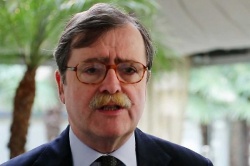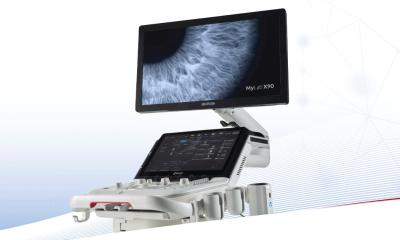Radiology beyond the battle
Today, more than fifty percent of all ultrasound examinations are not performed by radiologists,” underlines Professor Dr Lorenzo Derchi, Head of Emergency Radiology at San Martino Hospital at University Hospital Genoa in Italy.


On the one hand this is due to the fact that radiologists are increasingly losing interest in ultrasound – and the relationship between radiologists and ultrasound has never been known to be a love affair as Derchi says. On the other hand there are all the other medical disciplines that have been nibbling on the radiology cake: “During the turf battles of the 1980s clinicians have claimed ultrasound for themselves and established their own specialized examination methods,” the Italian radiologist recalls.
Turf battles, the fight of medical disciplines to reign over certain examination methods, are daily fare for radiologists. Their narrative in a nutshell: Radiologists develop innovative methods which other disciplines then hijack piece by piece. At the European Congress of Radiology (ECR 2014), which is taking place in Vienna until Monday, the session “Radiology: opportunities and threats” was dedicated to the question how in view of these developments radiology can stand its ground.
“Others have detected the green grass of the radiological meadows,” Professor Dr Georg Bongartz, Deputy Medical Director of the Clinic of Radiology and Nuclear Medicine and Head of Abdominal and Oncological Diagnostics at the University of Basle (Switzerland), summarized the current situation vividly. Ultrasound, he said, is a “lost domain” and in other areas the situation, from the point of view of the radiologists, is critical, for example in cardiac or orthopaedic CT. “There is no protection against the clinician’s interests. We can no longer rely on the traditional concept – to build fences,” Bongartz points out. And the radiologist understands the clinicians: “Why should they buy a service they could easily do better themselves?”
In order for radiology to prevail, radiologists, Bongartz says, have to remain “at the top of the clinical knowledge chain” rather than merely relying on their technical skills. If they do not succeed in doing so, Bongartz is sure, one day they “will be replaced by technical staff and the clinicians will read the images themselves.” Radiologists, he urges, have to turn a disadvantage – that they never exclusively ‘own’ a patient – into a distinct advantage: “We have to define ourselves as a vital part of the team.” It won’t suffice to just write a report, he reminds his colleagues, but have to transport messages, to offer advice. “Share the turf”, he says, “and there won’t be any turf battles any longer. We have to turn the battles into opportunities.”
“Opportunities”, Professor Dr Jim A Reekers of the Academisch Medisch Centrum (AMC) in Amsterdam, Netherlands, agrees, is the magic word: “That is what you can learn from management and politics: Never talk about problems. Replace this word by ‘opportunities’.” The rapid evolution of sub-speciality societies and sub-speciality meetings, the fact that conventional radiology is being replaced by clinical radiology and that radiology is becoming a major player in patient management – Reekers is happy to see these developments. Nevertheless, he warns, radiologists have to put their shoulder to the wheel in order to survive in an ever changing environment: “Imaging is the most crucial cornerstone in diagnosis. The radiologists have to be the undisputed authorities on this field.” If that does not happen, Reekers predicts a bleak future for his discipline: “If we don’t recognize the opportunities, we could get into deep, deep trouble.”
10.03.2014











